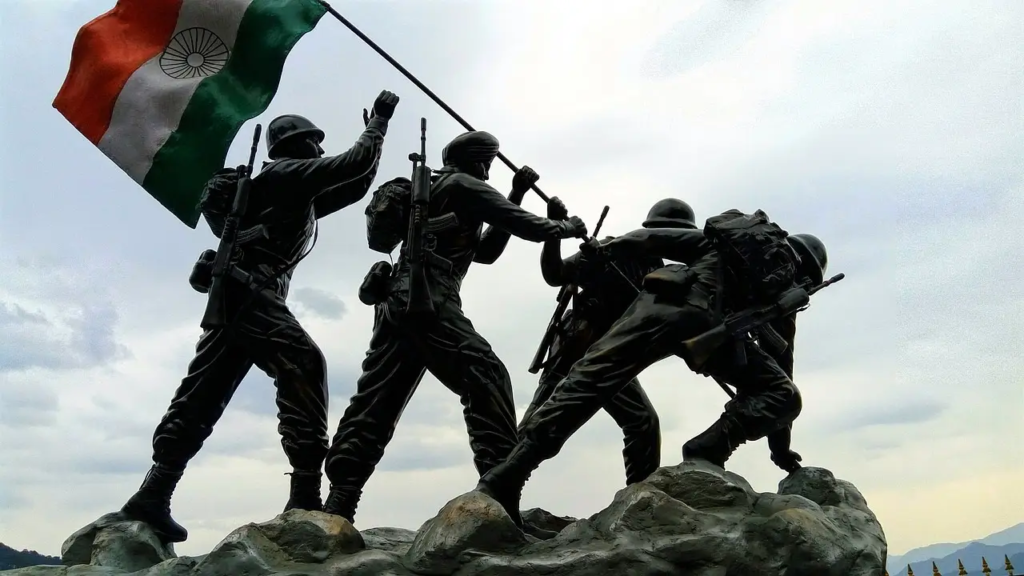
Table of Contents
- Introduction: More Than Just a Destination
- The Battle of Kargil: A Brief Retelling
- Dras – The Gateway to Valor
- Walking Through the War Memorial
- Names Etched in Stone: The Wall of Heroes
- The Eternal Flame: Symbol of Unending Sacrifice
- Lessons from the Battlefield
- Why You Should Visit: Patriotism Beyond Borders
- Best Time and Travel Tips
- Final Reflections: Remembering, Honoring, Continuing
1. Introduction: More Than Just a Destination
The Kargil War Memorial isn’t just a monument—it’s a beating heart of remembrance nestled among the cold Himalayan winds. Located in Dras, the second-coldest inhabited place on Earth, this site isn’t merely a point on a map—it’s a sacred reminder of courage carved into the mountains.
2. The Battle of Kargil: A Brief Retelling
In 1999, the silent heights of Kargil roared with the defiance of Indian soldiers. The Kargil War, a surprise intrusion by Pakistani forces into Indian territory, sparked a fierce conflict. What followed was a display of unparalleled grit, with Indian troops reclaiming peaks at altitudes over 16,000 feet. Operation Vijay became a resounding declaration of India’s will to protect every inch of her soil.
3. Dras – The Gateway to Valor
Dras isn’t just a town—it’s a threshold between life and legend. As you travel the Srinagar-Leh Highway, the stark beauty of Dras sets the stage. The terrain is harsh, the wind sharp, and yet the atmosphere is serene, touched by the solemn grace of the fallen.
4. Walking Through the War Memorial
As you step into the Kargil War Memorial, you are welcomed by the pink sandstone archway leading to an open courtyard. The main structure stands proud, backed by the looming Tololing Hill, where some of the fiercest battles took place. Everything here speaks softly but powerfully—the silence is not empty, it’s full of memory.
5. Names Etched in Stone: The Wall of Heroes
The memorial wall bears the names of over 500 soldiers who made the ultimate sacrifice. Each name is a story, a son, a brother, a friend. Their silent presence lingers in the air, etched in black stone that time dares not erase.
6. The Eternal Flame: Symbol of Unending Sacrifice
At the heart of the memorial burns the Amar Jawan Jyoti—an eternal flame that refuses to die. It burns day and night, echoing the undying spirit of the jawans who laid down their lives so the tricolor could continue to fly high.
7. Lessons from the Battlefield
The Kargil War wasn’t just about military might—it was a masterclass in resilience. Young officers fresh out of training, soldiers carrying heavy artillery on foot, and medical teams operating in sub-zero temperatures—it was humanity at its most determined. For every challenge, there was courage. For every loss, a renewed will to fight.
8. Why You Should Visit: Patriotism Beyond Borders
This isn’t a war museum meant only for veterans. It’s a national treasure every Indian should witness. Standing there, amid the wind and the whispers of the past, you understand patriotism not as a word but as a living, breathing emotion. It reshapes how you see your flag, your freedoms, and your fellow countrymen.
9. Best Time and Travel Tips
- Best Time to Visit: May to September (when the roads are open and the weather is bearable)
- How to Reach: The nearest airport is Srinagar, and from there it’s a 5-hour drive to Dras
- Things to Carry: Warm clothing, sturdy shoes, water, and most importantly—a heart ready to feel
10. Final Reflections: Remembering, Honoring, Continuing
A visit to the Kargil War Memorial changes you. It reminds you that while we enjoy peace in the plains, some fought in silence among snow-laden ridges. It’s not just about looking back, but looking forward—with deeper gratitude, renewed respect, and the promise to uphold the values they died defending.
Let this journey be more than a travel plan. Let it be a tribute.

